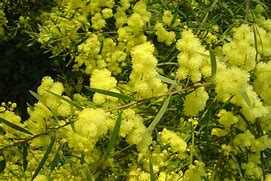Emblem of The Queensland Council of Garden Clubs

Cooktown Orchid Dendrobium phalaenopsis
On 19 November 1959 the Cooktown Orchid, under the botanical name of Dendrobium bigibbum var phalaenopsis, was proclaimed as the floral emblem of Queensland (Act). It conformed with the Government's criteria in being an easily cultivated native species confined to Queensland, decorative and distinctive in appearance, and coloured close to the State colour, maroon.
The correct botanical name for the Cooktown Orchid has, however, been the subject of continuing speculation and debate.
Plants of Dendrobium bigibbum were first collected by a Dr Thomson on Mount Adolphus, a small island about 18 km north-east of Cape York. These plants were sent to a nursery in London, and in 1852 the species was described and named by the British botanist, John Lindley (1799-1865). It does not occur near Cooktown.
Dendrobium phalaenopsis was described by Robert FitzGerald, Surveyor General of New South Wales in 1880. In his description he included the words "It was obtained near Cooktown, Queensland". In December of the same year he published a beautiful colour plate of Dendrobium phalaenopsis in 'Australian Orchids' with the words "obtained in northern Queensland", which clearly illustrates the plant people now know as the Cooktown Orchid.
The generic name Dendrobium is derived from the Greek 'dendron', meaning 'tree', and 'bios', meaning 'life'; plants of many species of this genus perchon tree trunks and branches. The specific name phalaenopsis from the Greek 'phalaina', meaning 'moth', due to the flower's resemblance to a moth. Dendrobium is a very large genus of more than 1400 species in south and east Asia and in the south-west Pacific. Dendrobium belongs to the orchid family, the largest family of flowering plants. This family is distributed widely throughout the world, with the greatest number in tropical areas.
The common name, Cooktown Orchid, refers to the northern Queensland town, Cooktown, which lies within the distribution of the species on the Endeavour River, named by Captain Cook after his ship was repaired there in 1770.
Copied from the Australian National Botanical Gardens web site. An Australian Government Initiative.
Acacia fimbriata BCC emblem Oct 2023

BRISBANE GOLDEN WATTLE - ACACIA FIMBRIATA
Acacia fimbriata! Better known as the Brisbane Golden Wattle, it grows in a wide range of habitats across the east coast of Australia ranging from NSW and Queensland. You'll often find this shrub along rocky streams as a part of Eucalyptus woodland communities growing in rocky and sandy soils or along the fringes of rainforest in more northern areas. It produces gorgeous bright yellow flowers that turn into edible seed pods.
Description
Acacia fimbriata, commonly known as the fringed wattle, Brisbane golden wattle, or just the Brisbane wattle, is a shrub that has an erect or spreading habit and typically grows to a height of 6 to 7 metres (20 to 23 ft) and a width of around 6 m (20 ft).It has angled or flattened branchlets and linear phyllodes with a narrowly elliptic or narrowly lanceolate shape and are straight or very slightly curved. The phyllodes are 2 to 5 centimetres (0.79 to 1.97 in) in length and 2 to 7 millimetres (0.079 to 0.276 in) wide.
It blooms between July and November producing inflorescences in groups of 8 to 25 located in an axillary racemes, the spherical flower-heads have a diameter of 3 to 5 mm (0.12 to 0.20 in) and contain 10 to 20 bright yellow or sometimes pale yellow flowers. The glabrous, firmly paper seed pods that form after flowering are flat and straight to slightly curved with straight sides. The pods have a length of 3 to 9.5 cm (1.2 to 3.7 in) and a width of 5 to 8.5 mm (0.20 to 0.33 in).The slightly shiny black seeds are arranged longitudinally in the pods. the seeds have an oblong-elliptical shape and are 4 to 5 mm (0.16 to 0.20 in) in length with a clavate aril.
Taxonomy
Acacia fimbriata was first formally described by the botanist George Don in 1832 in his book A General History of Dichlamydeous Plants from an unpublished manuscript by Allan Cunningham.[ The type specimen was collected by Cunningham in 1828 from along the Brisbane River.
Distribution
The shrub is commonly situated in coastal areas and the adjacent tablelands] in New South Wales and Queensland. In New South Wales it is found from Nerriga in the south to Inverell in the west to north of the Queensland border as far as Yeppoon and the Carnarvon National Park.[It is often located along rocky streams as a part of Eucalyptus woodland communities growing in rocky and sandy soil] or along the fringes of rainforest in more northern areas.
Cultivation
The plant is available for cultivation in seed form. It can be gown as a hedge or screening plant but does require adequate water. It is quite hardy, can be planted in a tropical environment and is frost tolerant.
see Wikipedia post.
